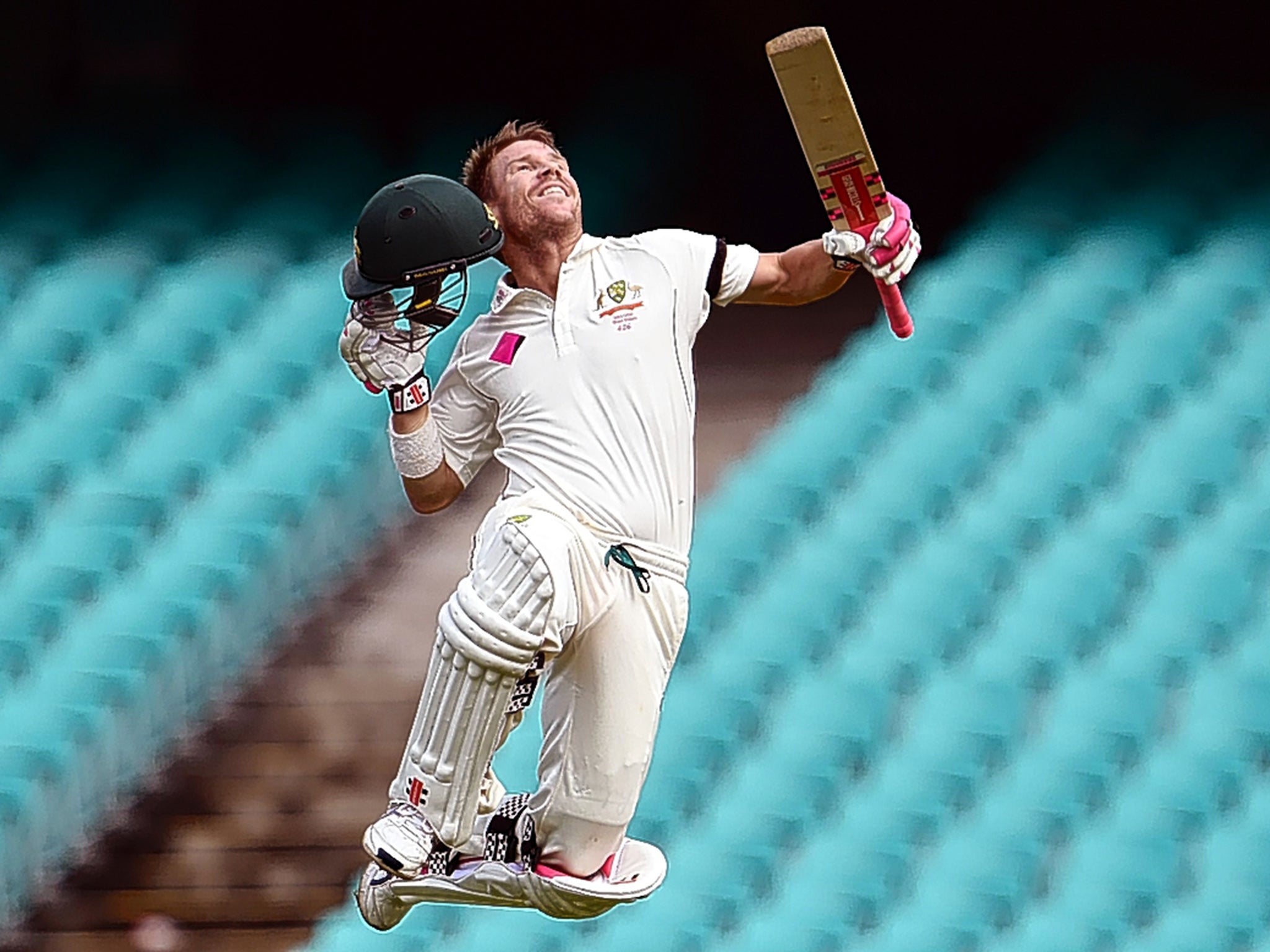Big Bash delivers a new blow to ailing Test match game
Reformers have contrasted the 80,000 crowd for Saturday’s T20 Melbourne derby with the empty stands at the West Indies series, writes Richard Edwards

The contrast between the health of cricket’s longest and shortest formats has rarely been so stark – and nowhere has it been better illustrated than in Australia this winter.
Yesterday morning the West Indies captain, Jason Holder, turned down the chance of chasing a fifth-day victory at the SCG offered by an Australia side scenting a 3-0 series win that would have sealed their climb to the top of the ICC Test rankings.
The game petered out to a predictable draw, with only a David Warner century offering a sparse attendance anything approaching excitement. Across town, home side Sydney Thunder were beaten by Perth Scorchers in front of crowd approaching 20,000.
The main entertainment there, ironically, came from Andre Russell – one of many West Indians who have turned their back on the Test side in favour of a format which offers them the kind of riches well beyond those who run cricket in the Caribbean.
On Saturday night, a record crowd of over 80,000 packed into the MCG to watch the two Melbourne franchises – the Renegades and the Stars – compete in a domestic Twenty20 competition that makes England’s T20 Blast look like a summer tea party.
David McClatchey, who runs the Fanatics– the Antipodean answer to the Barmy Army – says this season’s Big Bash has gone “ballistic”.
The Test game, meanwhile, seems intent on shooting itself in the foot. A total of 61,503 spectators came to the Sydney Test, the smallest aggregate crowd for the New Year Test match since 1992 – although it should be said that two days were washed out completely and there were only 11 overs on the second day. And this lightweight West Indies team were nothing more than a glorified punchbag for Australia throughout the series.
The packed houses that have greeted the Big Bash have once again asked serious questions about Test cricket’s long-term future.
“The recent crowd figures at the Australia and West Indies Test relative to the BBL tell the story,” says Tony Irish, head of the international players’ union, Fica. “International bilateral cricket desperately needs change to its structure and to find genuine context. I think everyone in cricket finally acknowledges this. I don’t think this can wait until 2023 when the current Future Tours Programme ends. Significant change needs to happen as soon as possible.”
The worrying thing for Test lovers is that while Twenty20 continues its rapid rise, changes to the five-day game take place at a glacial pace. This winter’s day-night Test between Australia and New Zealand did offer a glimpse of a marginally brighter future but, according to Tim Wright, who was instrumental in the setting up of the Indian Premier League (IPL) in 2008, more has to be done – and fast.
“People have been saying for years at things like the Cowdrey Lecture that Test cricket is dying,” he tells The Independent. “Everyone just sort of shrugs and says: ‘Maybe it is but what can you do?’ Now I genuinely think there’s a real danger that in the lifetime of our children it will be gone.”
The lack of context referred to by Irish is clearly an issue, with the ICC dragging its heels over the implementation of a global Test championship. But the Fanatics demonstrated in England last summer – as the Barmy Army routinely do overseas –that the appetite for the Ashes remains as healthy as ever. Yet for those brought up on T20 and one-day international cricket, that interest might not extend beyond that biennial encounter.
“I think everyone in Australia appreciates that Test cricket is the pinnacle for the players – but from a spectator’s perspective this BBL is going ballistic, it’s just absolutely huge because of the performers involved,” says McClatchey.
The BBL’s main advantage is that it takes place during the week in a country where midweek sport is still viewed very much as an oddity. “We’re used to our sport being played on Saturday and Sunday afternoons,” says McClatchey. “I think that’s a big part of the Big Bash’s appeal and it’s also taking place at a time when people can come to the games.”
Compare also the succinct nature of the BBL with the length of the tours undertaken by the likes of Australia to England, which are described by Wright as appearing to be “a legacy from the age of steam”. “They wouldn’t look out of place as tours from the 1870s,” he says. “If you were starting out with a blank piece of paper now, this is not how you would do it.”
He suggests that an English summer could include seven Tests – against not just two nations, but against four or five – a format which would attach meaning to almost every game and capitalise on England’s multicultural make-up. This could be repeated in the southern hemisphere during the English winter so that each year could produce a Test champion.
McClatchey believes T20 has breathed fresh life into the game, saying: “It’s attracting women, it’s attracting kids and it’s attracting families – it’s encouraging everyone to pick up a bat. Without it I’m not sure where we would be.”
It is hard to argue with that sentiment. The biggest job facing the ICC is to find a way to ensure that both formats can exist harmoniously.
Subscribe to Independent Premium to bookmark this article
Want to bookmark your favourite articles and stories to read or reference later? Start your Independent Premium subscription today.

Join our commenting forum
Join thought-provoking conversations, follow other Independent readers and see their replies